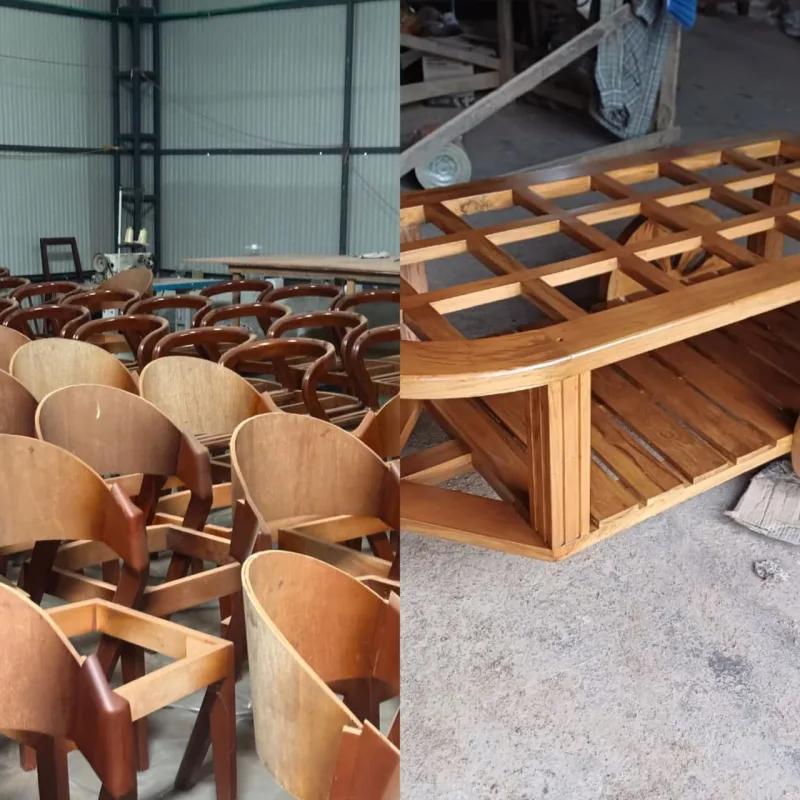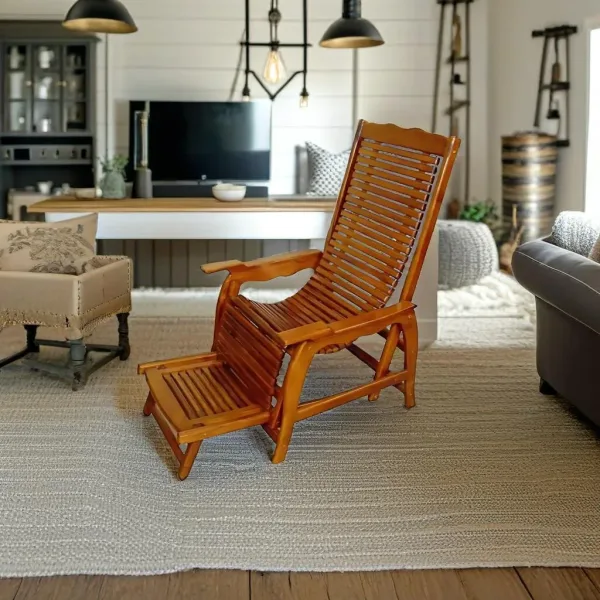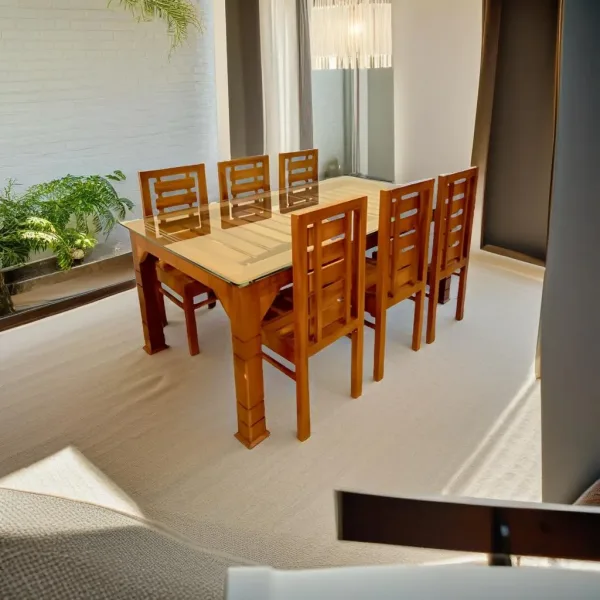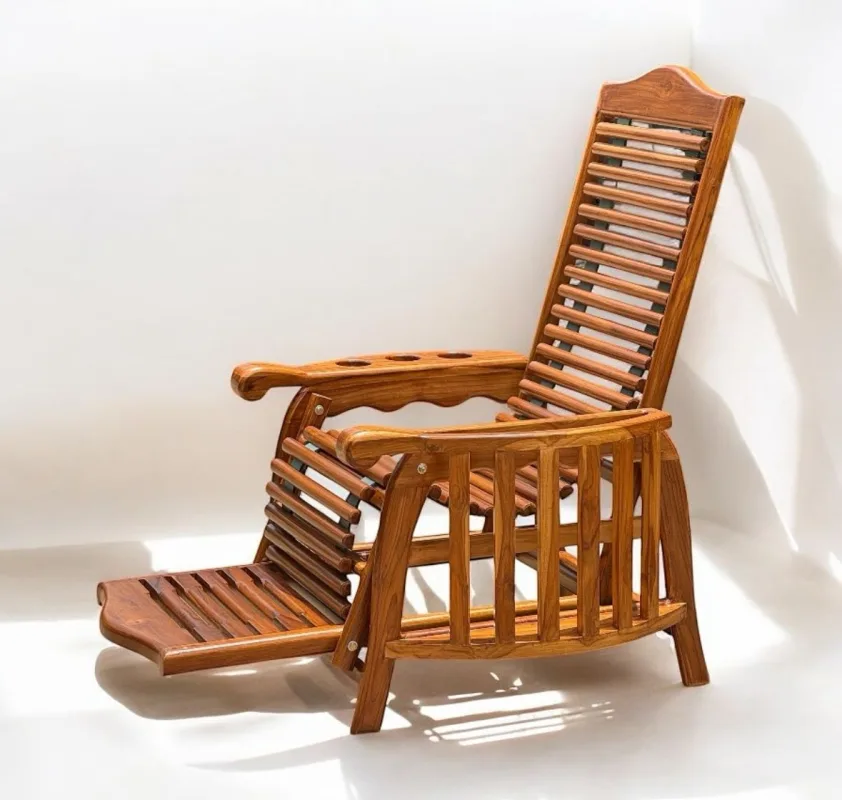
Blog
Nilambur Teak vs Normal Teak Wood: Key Differences You Must Know

Teak wood furniture has long been a symbol of luxury and strength. Yet, not all teak is the same. Of the various types available, Nilambur teak has the reputation of being one of the most high-end varieties, and people often equate it to normal or commercial teak wood.
Learning the Roots of Teak Wood Furniture Teak?
Teak, classified as Tectona grandis, is a tropical hardwood found in South and Southeast Asia. “Normal teak wood” is a generic term referring to teak originating from some general location, which includes teak from African plantations, Indonesia, and elsewhere in India. Teak from different locations results in differences in the wood’s characteristics, thus its quality and price.
Nilambur teak, on the other hand, is not a generic name. It specifically denotes the teak that grows on the special, nutrient-rich soil and tropical climate of the Nilambur district of Kerala, India. This particular geographical zone and its history of scientific teak cultivation, since 1842, have bestowed upon Nilambur teak a certain set of qualities that are almost unattainable in other varieties.
The Geographical Indication (GI) Tag: A Mark of Authenticity
One of the strongest differences between Nilambur teak and every other variety of teak wood furniture is that it carries a Geographical Indication (GI) mark. In 2017, Nilambur teak was the first forest product in the world to be accorded this distinction. This means this mark is a legal notification that the distinctive characteristics of the wood are directly attributed to the specific location from which it originates.
Nilambur teak GI tag is such a “seal of confidence” that assures its genuineness and superior quality. It assists the consumer in differentiating authentic Nilambur teak from counterfeits and protects the wood’s reputation from forgery. By purchasing teak wood furniture that is GI certified from Nilambur, you are acquiring a product with a tried and tested reputation for quality.
Key Differences: Nilambur Teak and Normal Teak
The distinction between Nilambur teak and other types goes far beyond just a label. It’s about intrinsic differences that affect the performance and appearance of the wood.
1. Durability and Oil Content
Nilambur teak is renowned for its high oil content and a special compound called caoutchouc. These compounds serve as natural protection, thereby making the wood highly resistant to insects such as termites, fungal rot, and decay. This high oil content also provides Nilambur teak with its high resistance to moisture, hence its traditional application for luxury uses such as shipbuilding. Conversely, plantation teak or normal teak tends to have lower oil content, which makes it less resistant and more prone to rotting, and may need to be chemically treated at times.
2. Color and Grain Pattern
The beauty of the teak wood furniture is one of the main attractions, and with Nilambur teak, it reaches new heights. It is famous for its breathtaking, rich golden-brown color that has fine, straight grain patterns that are an artwork by themselves. These grains usually come with delicate dark streaks that get darker and richer with age, infusing each piece with a personal charm. Although other varieties of teak can also be golden in color, they usually lack the fine grain and uniform grain patterns characteristic of Nilambur teak.
3. Growth Rate and Density
The gradual, consistent growth of Nilambur teak in its natural habitat produces a dense and durable wood. This high density directly makes it more durable and resistant to warping and cracking. Other plantation teak from elsewhere is sometimes cultivated for commercial reasons and has a quicker growing cycle. Although this does make it more accessible and less expensive, the quicker growth can lead to broader grains and a less dense, less stable wood.
4. Historical Status and Legacy
Nilambur teak boasts a rich heritage that encompasses its applications in legendary buildings and luxury products. Nilambur teak was the preferred wood of the British to construct their naval ships and interiors of their luxury brands such as Rolls-Royce. The British established the world’s first-ever commercial plantation of teak in Nilambur, which cemented its position in history. This has contributed to Nilambur teak being an icon of luxury and prestige, in contrast to most other species that are mere commodities.
5. Price and Value
With its high-quality status and elite reputation, it is not surprising that Nilambur teak has a higher premium. The price echoes its remarkable durability, aesthetics, and protection awarded through the GI tag. Although regular teak might be cheaper to start, the long-term value, longevity, and investment yield of authentic Nilambur teak wood furniture make it a better-value purchase in the long run.
How to Identify Genuine Nilambur Teak Wood Furniture
To ensure you are getting the real deal, look for these signs:
- Geographical Indication (GI) Certification: Request the seller to present evidence of the GI tag. This is the best means to authenticate its genuineness.
- Color and Grain: Check the color of the wood. Pure Nilambur teak possesses a rich, even golden-brown color. Look for its distinctive fine and straight grain.
- Density: Inspect the weight of the furniture. Nilambur teak is heavy and feels massive.
- Source and Reputation: Buy only from established dealers that deal in Nilambur teak and are able to prove the origin of the wood

Conclusion: A Wise Investment in Teak Wood Furniture
Choosing teak wood furniture is a smart decision for any home, but opting for authentic Nilambur teak is a truly unparalleled investment. While normal teak offers a good entry point, Nilambur teak provides a level of durability, beauty, and prestige that is simply unmatched. It is a material that tells a story—one of history, nature, and meticulous craftsmanship. By selecting genuine Nilambur teak, you are not just buying a piece of furniture; you are acquiring a legacy that will be passed down for generations.
Browse best selling nilambur teak wood products
-
Royal Loryn Nilambur Teak Wood Arm Chair
Original price was: ₹27,500.00.₹24,999.00Current price is: ₹24,999.00. -
Royal Elara Nilambur Teak Wood Sofa Set
Original price was: ₹85,999.00.₹68,999.00Current price is: ₹68,999.00. -
Royal Darpan Nilambur Teak Wood Dresser Mirror
Original price was: ₹21,999.00.₹16,499.00Current price is: ₹16,499.00. -
Royal Sumrida Nilambur Teak Wood Easy Chair
Original price was: ₹34,999.00.₹19,999.00Current price is: ₹19,999.00. -
Royal Dhyonix Nilambur Teak Wood Dining Table With Glass Top
Price range: ₹38,999.00 through ₹52,999.00












